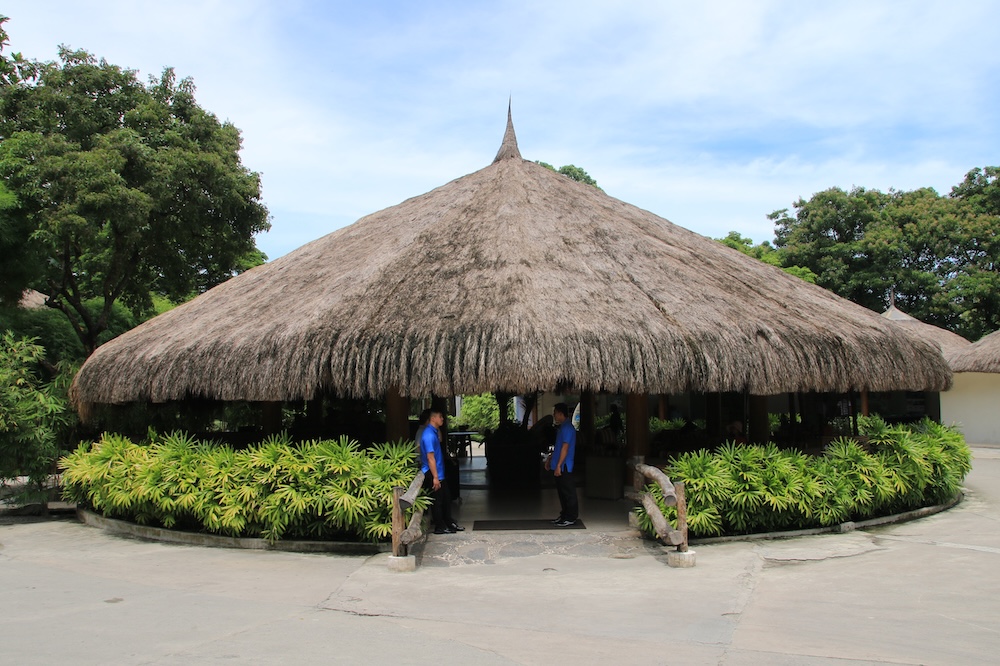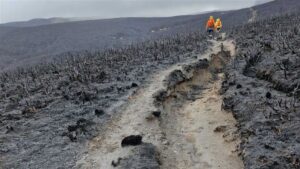Protecting Historic Buildings from Wildfires – Interventions on facades and roofs
Historic buildings can be exposed to risk by wildfires like any other building. In their case, though, vulnerability assessment should consider the problem due to the need not to remove or cover historic materials, even if their fire safety behaviour can raise concerns.
In order to analyse how to improve safety of historic buildings against wildfires, the first consideration concerns the fire threat. In particular, the first question is: how does fire spread from vegetation to buildings?
Wildfires threaten buildings primarily through two interconnected pathways. The first occurs when fire ignites in nearby wooded or vegetated areas, especially where trees are present.

As the fire burns, it produces glowing embers that rise with the hot gases. When accompanied by wind, these embers can travel great distances—ranging from tens to even thousands of meters—before landing on the ground, where they may continue to smolder or ignite new fires. Both mechanisms — embers and direct flames — can act simultaneously or alternatively, making effective building protection challenging.
If burning vegetation is located close enough to a building, flames can spread to its combustible materials, through a direct impingement, posing a serious risk to the structure.
Understanding these mechanisms is essential for implementing effective fire safety measures to protect our historic heritage from wildfire damage. Thus, in order to mitigate damages, two kinds of measures should be adopted. In any case, achieving high fire protection cannot be accomplished without intrusion or alteration of the historic fabric or environment. Practical difficulties, therefore, should not be disregarded.
Risk of Glowing Embers
In the face of the potential for glowing embers to ignite the combustible components of historic buildings, such as ceramic tile roofs, brick external walls, and wooden windows, which cannot be altered or concealed, safeguarding against wildfires necessitates a meticulous balancing act between preserving historic authenticity and mitigating fire risk. In particular:
Roof Protection for Ceramic Tile Roofs
- Ceramic tiles are naturally non-combustible and typically carry a Class A fire rating, making them highly effective at resisting wildfire flames and embers.
- The main wildfire vulnerability for these roofs is ember intrusion through gaps between tiles, which can ignite the underlayment or roof decking below. Therefore, it is crucial to keep the ceramic tile roof well-maintained with minimal gaps or broken tiles to prevent ember penetration.
- Using or retrofitting with a continuous, fire-resistant underlayment beneath the tiles can significantly reduce fire risks by blocking embers that slip through tile gaps.
- Regular inspection and repair of displaced or broken tiles are essential to maintain fire resistance without altering the historic appearance.
Facades with Brick Walls and Wooden Windows
- Brick walls are inherently fire-resistant, providing excellent protection against wildfire flames.
- Wooden windows, which cannot be changed or hidden, are a vulnerability. To protect them:
- Apply fire-retardant coatings or intumescent paints to wooden window frames and shutters to help resist ignition and slow flame spread without altering the appearance significantly.
- Install ember-resistant exterior window shutters or metal screens that are historically appropriate and can be opened or removed as needed.
- Use fine mesh screens (1/8 inch or smaller) over all window openings to prevent ember entry while preserving window appearance.
- Ensure tight sealing around window frames to reduce ember penetration gaps.
External Voids Protection
- Seal or protect external voids around roofs, eaves, and walls using non-combustible materials that blend with the historic fabric (e.g., mineral wool, fire-resistant caulking) to prevent ember accumulation and fire spread.
- Install fire barriers in ventilated cavities where feasible without impacting historic materials, to hinder chimney effects that accelerate fire spread in voids.
- Maintain clean gutters, eaves, and surfaces adjacent to wooden elements, clearing all flammable debris regularly.
Thatched Roofs
To protect thatched roofs against wildfires, the focus remains on preventing ignition from airborne embers and radiant heat, along with enhancing the roof’s resistance to fire spread:
Fire Retardant Treatments: Applying specialized fire retardants to thatch is critical to reduce its flammability and help prevent ignition from hot embers carried by wildfire winds. These treatments create a protective layer that slows down combustion and ember penetration.
Creating Defensible Space: Clearing and maintaining a firebreak zone around the building by removing all flammable vegetation reduces the likelihood of flames and burning debris reaching the thatch roof.
Ember Guards and Mesh: Installing fine metal mesh in roof valleys, vents, and eaves prevents the entry of burning embers while allowing ventilation, reducing the chance of internal ignition.
Risk of Direct Flame Impingement
The most natural measure that mitigates this risk is defining and maintaining around the building and area with few or no vegetation at all. The assessment on how wide the area should be and what kind of vegetation can be planted has some rules.
Depth and Zones of Defensible Space
- Zone 1 (Home Ignition Zone): Extends about 5 meters (15 feet) from the building. This zone requires the most rigorous management, with the removal of all dead vegetation, and maintenance of non-flammable or fire-resistant plants. No combustible materials or flammable plants should be near the building.
- Zone 2: Extends from 5 to 30 meters (15 to 100 feet) from the building. This zone involves thinning and spacing out vegetation to reduce fuel continuity and fire intensity. Grass should be kept short, and shrubs and trees should be planted with adequate spacing.
- Beyond 30 meters (100 feet): Vegetation management is more relaxed but should still avoid dense continuous fuels and provide breaks to reduce fire spread risk.
Vegetation Management Rules
- Plant Height: In closer zones, plant height should be kept low—grass trimmed to less than 10 cm (4 inches), shrubs ideally not exceeding 1 meter (3 feet) in height.
- Spacing between Plants:
- Horizontal spacing between shrubs or groups of shrubs should be approximately 6 meters (18 feet).
- Trees should be spaced so that mature crowns are at least 9 meters (30 feet) apart to prevent crown fires.
- Vertical Spacing: Remove “ladder fuels” to prevent fire from climbing from grass to shrubs or trees. Vertical clearance between the top of shrubs and the lowest tree branches should be at least three times the height of the shrubs.
- Plant Types: Use fire-resistant plants with high moisture content, low resin or sap, such as deciduous trees, succulents, and native species adapted to the local environment. Avoid dense, resinous, or highly flammable plants.
Which Plants are OK and which are not?
The most fire-resistant or non-flammable plants generally share these traits: high moisture content in their leaves, low amounts of volatile oils or resins, open branching that doesn’t trap heat, and little dead material accumulation.
Fire-Resistant Plant Types
- Deciduous Trees and Shrubs: These have higher moisture in their leaves and less flammable sap than conifers. Examples include oak, maple, lilac, and currant species.
- Succulents: Thick, fleshy, water-storing leaves make succulents highly fire-resistant. Good choices are ice plants, sedums, agave, and yucca.
- Broadleaf Evergreens: Some have relatively fire-resistant qualities, especially those with leathery or waxy leaves.
- Low-growing Ground Covers and Perennials: Plants like lavender, salvia, daylilies, coneflowers, and ornamental onions have low flammability because of their moist, fleshy foliage.
Examples of Fire-Resistant Plants
- Yucca (stiff sword-like leaves, drought-tolerant)
- Lavender (fragrant, low flammability)
- Succulents such as sedum and ice plant
- Beardtongue (penstemon)
- Coral Bells (heuchera)
- Daylilies, Coneflowers, Lilacs
- Various ornamental grasses with low dead fuel accumulation
Plants to Avoid
- Pine, juniper, eucalyptus (high resin/oil content)
- Tall, dry ornamental grasses
- Shrubs and trees with peeling bark or dry woody parts
Critical Reflections on Standards and Historic Buildings
In conclusion of the concise summary, it may be beneficial to incorporate some general critical reflections on the settings of these structures.
When discussing wildfire safety for historic buildings, it becomes evident that many of the most widely adopted standards are conceived for modern construction and seldom consider the practical constraints of cultural heritage.
What may seem straightforward in a regulatory document often proves impractical—or even detrimental—when applied to traditional structures. The challenges are not uniform but rather shaped by regional building practices.
- In the Mediterranean context, with its masonry walls, tiled roofs, and wooden openings, recommendations such as installing continuous fireproof membranes under ceramic tiles or replacing windows with modern fire-rated glazing are particularly problematic. Both measures risk altering original materials and architectural character, while the idea of creating wide vegetation-free defensible spaces is incompatible with dense historic town fabrics.
- For Northern Europe, the situation is different but no less difficult. Here, timber-framed buildings and thatched roofs are central to architectural identity. Standards that propose substituting thatch with non-combustible roofing, or sealing every cavity with modern materials, are in direct conflict with authenticity and long-term conservation. Even vegetation management rules—such as clearing thirty meters of space around a structure—often clash with rural heritage landscapes where hedgerows and woodlands are integral features.
- In East Asia, particularly in China, Japan, and Korea, the reliance on exposed timber structures, tiled or shingled roofs, and painted finishes poses yet another set of difficulties. Chemical fire-retardant coatings can damage traditional lacquers and carvings, while sprinkler systems, often mandated by standards, demand infrastructure that is rarely available and risk harming delicate interiors. Likewise, the recommendation to remove nearby trees is culturally unacceptable in temple or shrine complexes, where sacred groves form part of the heritage value itself.
These examples illustrate that one-size-fits-all wildfire protection codes are poorly suited to heritage realities. Instead of prescriptive solutions, what is needed is a more flexible approach—one that respects authenticity, recognizes functional equivalents such as shutters in place of modern glazing, and incorporates the cultural landscape as part of the protective strategy. Only through such adaptation it’s possible to reconcile wildfire safety with the preservation of historic identity.




